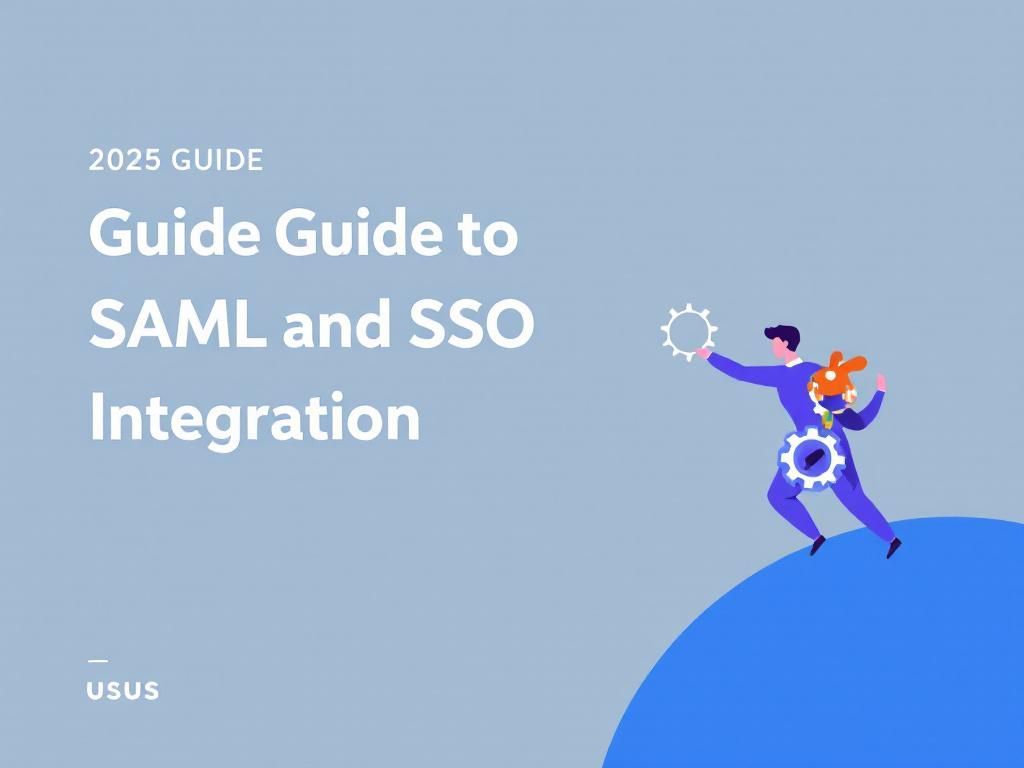Unlocking SAML: Seamless SSO for Enterprises
Discover how SAML enables seamless Single Sign-On (SSO) for enterprises, enhancing security and user experience across applications.

Single Sign-On (SSO) has revolutionized the way enterprises handle authentication, allowing users to access multiple applications with a single set of credentials. One of the most prominent protocols facilitating this functionality is Security Assertion Markup Language (SAML). In this article, we delve deep into the mechanics of SAML, its benefits, implementation procedures, and how it fits into the larger landscape of enterprise security.
Table of Contents
Understanding SAML: The Basics
SAML is an XML-based framework that enables secure web domains to exchange user authentication and authorization data. It allows identity providers (IdPs) to pass secure authentication credentials to service providers (SPs), streamlining the process of user access across various applications.
Key Components of SAML
- Identity Provider (IdP): The source that authenticates users and provides SAML assertions to service providers.
- Service Provider (SP): The application or service that users want to access. It relies on SAML assertions from the IdP.
- SAML Assertion: The XML document that contains the user authentication and authorization information.
- SAML Protocol: The rules and processes that define how SAML assertions are exchanged between IdPs and SPs.
Benefits of Implementing SAML
Integrating SAML into an enterprise’s authentication framework brings a multitude of advantages:
- Improved User Experience: Users enjoy seamless access to multiple applications without needing to log in separately for each one.
- Enhanced Security: SAML reduces the risk of password fatigue, leading to stronger password practices, and limits the number of credentials users manage.
- Lower IT Costs: With fewer password reset requests and streamlined access management, organizations can reduce their support overhead.
- Centralized Identity Management: Organizations can manage user identities and access control from a single platform, improving oversight and compliance.
How SAML Works: The Authentication Process
The SAML authentication process typically involves the following steps:
- User Access: A user attempts to access a service provider (SP).
- Redirection to IdP: The SP redirects the user to the IdP for authentication.
- User Authentication: The IdP authenticates the user, often through a login form or multi-factor authentication.
- Assertion Creation: Upon successful authentication, the IdP generates a SAML assertion.
- Assertion Transmission: The assertion is sent back to the SP via the user’s browser.
- Access Granted: The SP validates the assertion, and if valid, grants access to the user.
Implementing SAML in Your Enterprise
1. Evaluate Your Current Infrastructure: Before implementation, assess the current authentication and authorization processes in place. Identify suitable IdPs and SPs.
2. Choose an Identity Provider: Select a robust IdP that fits your enterprise needs. Common options include:
- Okta
- OneLogin
- Azure Active Directory
- Google Identity
3. Configure Service Providers: Integrate your SPs with the chosen IdP. Ensure they accept SAML assertions and configure them properly.
4. Security Considerations: Ensure that all communications are secure. Use HTTPS to protect SAML assertions during transit. Implement best practices like signing assertions and using encryption.
Challenges and Solutions in SAML Implementation
While SAML provides a robust framework for SSO, several challenges can arise during implementation:
| Challenge | Solution |
|---|---|
| Complex Configuration | Use detailed documentation and/or professional services during the setup process. |
| Interoperability Issues | Test integrations with various SPs and IdPs to ensure compatibility. |
| User Education | Provide clear guidelines and training to users about using SSO systems. |
| Security Risks | Conduct regular security audits and update configurations based on best practices. |
Future of SAML in the Enterprise Landscape
As enterprises continue to adopt cloud services and remote work becomes more prevalent, protocols like SAML remain critical. However, emerging technologies and trends are shaping its evolution:
Integration with Other Authentication Protocols
While SAML is widely used, its integration with OAuth and OpenID Connect is becoming more prevalent, particularly in mobile and API-based applications. This hybrid approach can enhance security and user experience.
Increased Focus on Security
With the rise of cyber threats, enterprises are more focused on securing their identity management processes. SAML will likely need to adapt to incorporate stronger authentication methods, such as biometrics and contextual access.
Conclusion
Implementing SAML can transform an enterprise’s approach to user authentication. While it offers many benefits, successful implementation requires careful planning and consideration of both user experience and security. As technology evolves, so will the methods and protocols ensuring secure, seamless access to applications across the digital landscape.
FAQ
What is SAML and how does it work?
SAML, or Security Assertion Markup Language, is an open standard that allows identity providers to pass authorization credentials to service providers. It enables Single Sign-On (SSO) by allowing users to log in once and gain access to multiple applications without re-entering credentials.
What are the benefits of using SAML for SSO in enterprises?
Using SAML for SSO in enterprises enhances security by reducing password fatigue, simplifies user management, and improves user experience by allowing seamless access to various applications from a single login.
How does SAML improve security for enterprise applications?
SAML improves security by minimizing the number of passwords users must remember, reducing the risk of phishing attacks and credential theft, and enabling stronger authentication methods such as multi-factor authentication.
Can SAML be integrated with existing enterprise applications?
Yes, SAML can be integrated with existing enterprise applications that support SAML protocols, allowing organizations to implement SSO across their software ecosystem without significant changes.
What are the key components of a SAML-based SSO system?
The key components of a SAML-based SSO system include the Identity Provider (IdP), Service Provider (SP), SAML assertions, and the user agent (browser) that facilitates the communication between IdP and SP.
Is SAML suitable for all types of organizations?
SAML is particularly suitable for medium to large organizations that require secure access to multiple applications and services, but it can also be beneficial for smaller organizations looking to streamline user authentication processes.







